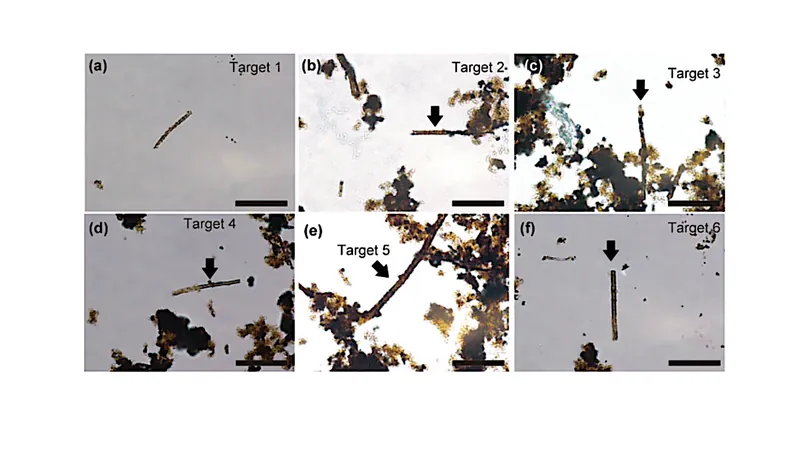
Discovering the Secrets of Life's Dawn: Revolutionary Technique Ignites New Insights into Early Cellular Evolution
2024-09-25
Author: Nur
Introduction
Fossils often bring to mind massive skeletons of long-extinct creatures, but that's just part of the picture! Enter microfossils—tiny remnants of life that reveal the secrets of Earth’s early biological evolution, often only visible through powerful microscopes. Recent groundbreaking research led by Akizumi Ishida of Tohoku University, in partnership with experts from the University of Tokyo and Kochi University, is shedding light on these ancient forms of life through a newly developed analysis method.
Breakthrough in Microfossil Analysis
For years, scientists have wrestled with the challenge of identifying minuscule amounts of essential elements like phosphorus and molybdenum within microfossils. However, this research team has made a significant breakthrough by focusing on 1.9 billion-year-old Gunflint microfossils, widely regarded as a benchmark in microfossil studies.
Innovative Analysis Technique
The innovative approach involved affixing these microfossils to a specialized glass slide coated with indium tin oxide (ITO). This unique material allows for simultaneous optical and electron microscopy analysis, unearthing insights from the microfossils while maintaining a clear view of their intricate structures.
Significant Findings
The ITO-glass not only serves as a great medium for imaging but also facilitates the precise detection of trace elements within the microfossils. The researchers were able to isolate genuine readings from natural background noise, which is crucial because phosphorus is already present in sedimentary rocks.
Phospholipid Membranes and Metabolic Enzymes
The findings are remarkable: the analysis revealed that these ancient microorganisms possessed phospholipid cell membranes, akin to those in present-day life forms. Moreover, the identification of molybdenum within the microfossils hints at the existence of nitrogen-fixing metabolic enzymes, indicating that these microfossils could belong to early cyanobacteria.
Consistency in Research
Unlike previous methods, this protocol stands out for its consistency in observing and analyzing the same sample, providing a significant leap in our understanding of life's evolutionary journey on Earth. As a result, it may answer pivotal questions about the origins and development of life on our planet.
Broader Implications
But that’s not all! This cutting-edge technique has far-reaching implications—it can also be applied to geological samples from Earth’s early periods with low organic material. Researchers can examine under-explored ancient terrains, potentially illuminating the existence of trace elements like copper, nickel, and cobalt, which could reveal intricate metabolic patterns of early life.
Conclusion
These insightful findings were published in the reputable journal, *Scientific Reports*, on September 20, 2024, and could redefine how we view the emergence of life on Earth. This innovative research points to an exciting new era in the study of early life evolution and could provide the keys to understanding one of humanity's greatest mysteries: the origins of life itself! Stay tuned for more updates as researchers continue to uncover the astounding narratives woven into the microscopic world of our planet’s past!

 Brasil (PT)
Brasil (PT)
 Canada (EN)
Canada (EN)
 Chile (ES)
Chile (ES)
 España (ES)
España (ES)
 France (FR)
France (FR)
 Hong Kong (EN)
Hong Kong (EN)
 Italia (IT)
Italia (IT)
 日本 (JA)
日本 (JA)
 Magyarország (HU)
Magyarország (HU)
 Norge (NO)
Norge (NO)
 Polska (PL)
Polska (PL)
 Schweiz (DE)
Schweiz (DE)
 Singapore (EN)
Singapore (EN)
 Sverige (SV)
Sverige (SV)
 Suomi (FI)
Suomi (FI)
 Türkiye (TR)
Türkiye (TR)